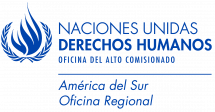A human rights policy can take many forms and has no uniform definition. At a minimum, it is a public statement adopted by the company’s highest governing authority committing the company to respect international human rights standards and to do so by having policies and processes in place to identify, prevent or mitigate human rights risks, and remediate any adverse impact it has caused or contributed to. It should explicitly use the words “human rights”.
Many human rights policies also elaborate on the company’s commitment to support human rights.1 Human rights policies can be found within company statements of business principles, codes of conduct or other values-related literature, or take the form of stand-alone statements on company websites or in other public corporate responsibility documentation.
Adopting a human rights policy is a precursor to a company’s human rights due diligence towards meeting its responsibility to respect human rights. It sends a clear signal to internal and external stakeholders that the company is striving to embed human rights into its operational policies and procedures and to understand the human rights impacts of the business, both positive and negative. It also signals a commitment to take respect for human rights sufficiently seriously to allocate management time and resources to developing and implementing a policy, including by consulting externally.
A Guide for Business: How to Develop a Human Rights Policy seeks to outline why companies should respect human rights, the principal reasons for adopting a human rights policy, its key ingredients and the best-practice process to develop one.
Descargue la publicación: PDF 345 Kb

